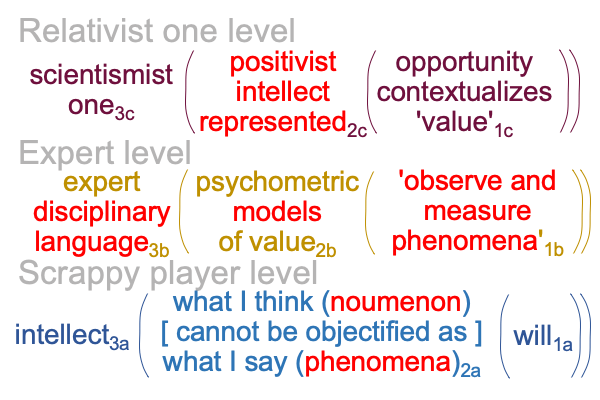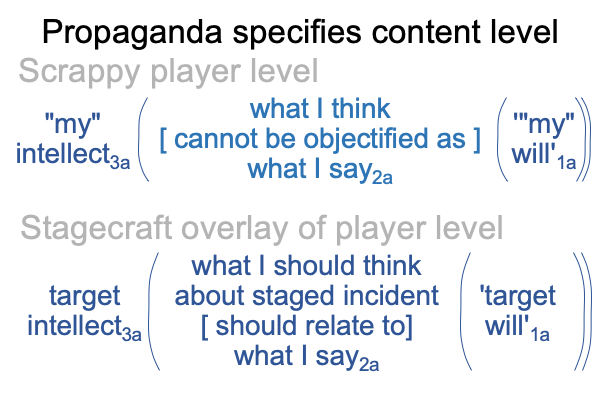0596 Here is the Positivist’s judgment, embodied in the post-truth interscope, as if the judgment has unfolded into the virtual nested form for the category of secondness.

What represents the positivist intellect2c?
The empirio-normative judgment2c.
0597 Now I consider the Torches of Freedom campaign that Stiles describes in chapter four as an example of stagecraft.
On March 31, 1929, at the Easter parade in New York City, a young woman steps out of the crowd on 5th Avenue and lights a cigarette. Press photographers capture the moment. The incident is magnified by radio and newspaper reports. The next day, a puff piece appears in the New York Times, applauding the courage of the ladies who lit up at the Easter parade. Women should do what they want to do.
0597 The goal of stagecraft is to present a fiat accompli, an event2a and a commentary2a, aiming to overlay what I think [and] what I say2a.

0598 Once this is accomplished, then the interscope for the post-truth condition engages as an exercise of applied science. What I think belongs to a noumenon and what I say corresponds to that noumenon’s phenomena.
0599 After the event, a Bernay-linked agency may ask my opinion, particularly how I feel (sensations) and what the event means to me (perceptions). All phenomena not related to the promotion campaign will be dismissed.
Then, this data1b will be analyzed according to the disciplinary language3b and methodologies2b of advertising in order to arrive at a model of value2b, not for the scrappy player, but for the cool-headed person who pays for the campaign. The determination of value2b may occasion the opportunity1c for another staged event2c, in which “courageous ladies”, once again, light up cigarettes as a demonstration of their freedom and independence.
0600 What does this mean?
On the content level, “my” intellect3a and “my” will1a are not exclusively my own, even though they occupy the normal context3a and potential1a of the scrappy player level. Instead, “my” reason3a,1a is contested. My reason3a,1a is precisely the target of the empirio-normative judgment2c.
